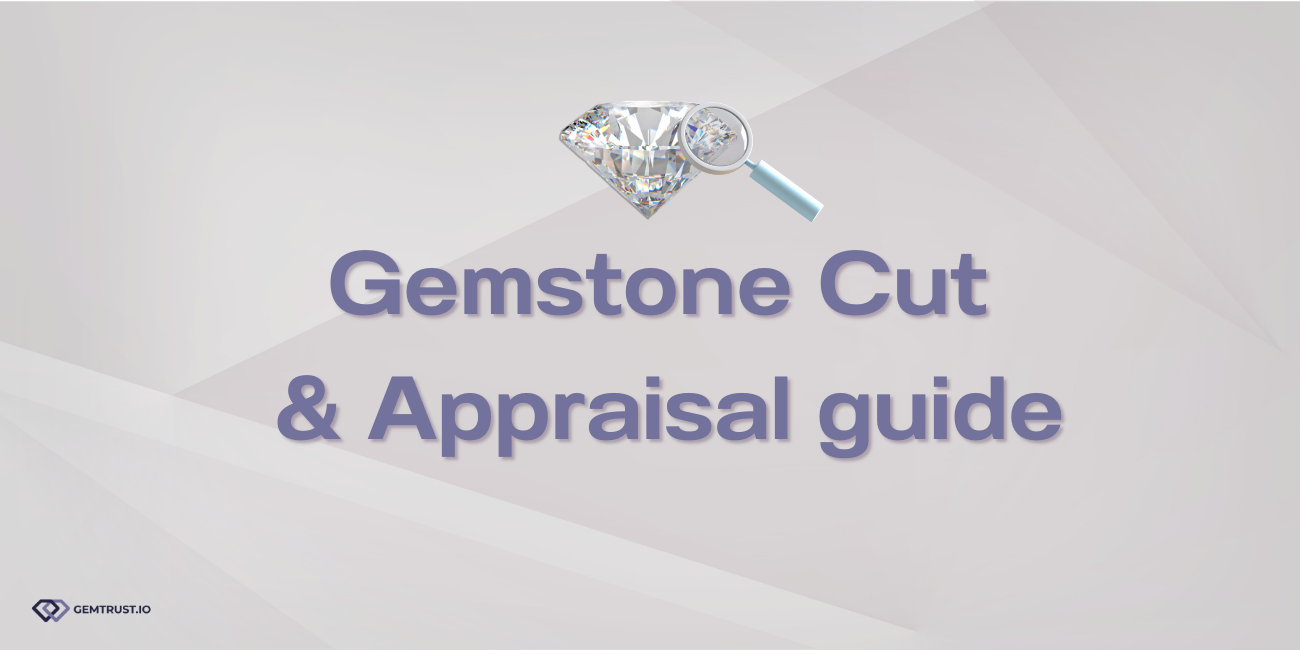
Gemstone Cut and Appraisal guide
Gemstone cut and appraisal guide
A very important feature in judging the quality and beauty of a gem is its cuts. The cut of a gem is usually dictated by the shape and size of the original rough stone. Rough which is rounded in shape will yield round brilliant stones. Rough which is squarish will yield square shaped stones. Rough which is elongated will yield marquise or baguette shapes and so on and so forth. Inclusions, cracks and other flaws will also affect the obtain maximum brilliancy while striving for maximum weight retention. For rubies and sapphires, the most common cut is oval. Round brilliant, emerald and cushion cuts are harder to find and require greater weight loss in the cutting process and therefore will cost more. When judging the cutting quality, the following factors play an important role: proportions, symmetry and finish.
Cut
Proportion refers to the physical dimensions of the gem in relation to its parts. The crown, girdle, pavilion, cutlet, etc. are parts of gem which ccan be measured and used in comparing and determining cutting quality.
An important aspect of proportion is the concept of depth percentage.
Depth percentage refers to the depth of the gem measured in millimeters and is derived by diving the depth of the gem by the diameter and multiplied by 100. For example, if your ruby measure 10 mm in diameter and 5 mm in depth (5/10 = 0.5 x 100 = 50%) the depth would be 50%
The ideal depth for diamonds is 60% and there is little deviation from the figure. However, in ruby and sapphire the acceptable level varies according to the personal preference and the current fashion in the marketplace of the particular country. For instance. flatter stones with depth percentage of 25 to 40 are acceptable in Italy and France, while Germany and Australia prefer to adhere to strict ideal proportions. Japan formerly bought only very well-made stones, but bigger spread stones have now become acceptable. The U.S. is a very big market and almost any type of cut can be sold.
Flatter stones also tend to give the impression of a bigger stone because it has bigger table, e.g., a flat 3 carats size stone tends to look like a 4 to 5 carats size stone. On the contrary, you should remember that thick stones which are too “deep” will also appear dark because light will be trapped in the stone.
Symmetry refers to the regularity or balance of the shape of the gem. For example, a gem when cut in half should be the “mirror” image of the other half. Unless a gem is in the “fancy cut” category, a balanced proportion and look is considered a very desirable feature.
Symmetry is given five possible descriptions on the AIGS Master Gemstone e - Report as: EXCELLENT, VERY GOOD, GOOD, FAIR, POOR
In an attempt to define cutting grade, we have assigned a numerical scale using numbers between 1 and 10.
Finish refers to the faceting quality of the gem and is judged by degree of shine, regularity, and flatness of each facet. Sub-standard cutting leaves nicks, scratches, dullness, or even cavities on facets and may reduce the desirability. Unless you are a gemologist or a cutter, do not be too concerned with the technical aspects of the cut such as the crown and pavilion angles or symmetry of the star facets, etc. You are really looking for the overall appearance, the sparkle, the flashes of red and blue brilliance from the reflection of the facets as you move the stone as it should appear on your fingers. Finish is given five possible descriptions on the AIGS Master Gemstone e - Report as: EXCELLENT, VERY GOOD, GOOD, FAIR, POOR.
AIGS RARITY
The Rarity Scale Rating is an opinion from our experts to provide the buyer additional information in relation to a time’s scarcity and/or uniqueness. This scale is not “static” as the rarity of any given gem at a given time may change, depending on supply and demand. The Extremely Rare (RRR) category is for items that are so rare that less than a handful is known to exist. it includes specimens with less than 10 samples of its kind known to exist in the world. The rating is based on the knowledge and information gained through personal communication with dealers, collectors, museum curators, etc. The Very Rare (RR) category represents gems and minerals tha are at most seen once a year and are almost never encountered in the market. Our experts know of the existence of a similar items as such but the piecesare still considered very rare. The Rare (R) term is given to difficult to find items and items which are not often seen in the market. You would be lucky to see a piece of it once a month if at all. Sometimes species grow in rarity over time, so the rarity grade may change over time.
AIGS RARITY
For those who wish to obtain a general idea of the quality of a ruby or sapphire, the AIGS Star Rating scale is available. The Master Gemstone e-Report enables the uninitiated to understand a gemstone’s quality by the number of stars assigned in every way including but not limited to its clarity, cut and brilliancy. Quality grading is subjective and is good as the experience and knowledge of the one giving its grade. Rarity, present demand, tradition and localized preferences also come into play. In the absence of any comparative scale, we believe the AIGS Ruby/Sapphire Color Master becomes a useful “source” for obtaining an independent expert opinion of the gemstone’s quality in question.
AIGS Star Rating Scale is shown above. All grades are represented on this five-star scale. Overall grades are not determined in a purely linear fashion. Instead, they are derived from a proprietary weighing system developed by AIGS. The information is useful to consumers who want to know about the quality of the gems that they wish to buy but do not know who to ask. A Star Rating scale cannot by itself fully describe the exact quality of every gem. For each grade, some stones will fall in the center and some near a border. The Star Rating is a point of view an independent group of trained experts.
*IMPORTANT LIMITATIONS: THE AIGS Star Rating and Master Gemstone e - Report (MGeR) is not a valuation, warranty or guarantee. Users of this MGeR wish to consult a reputable jeweler or qualifies gemologist about the information contained therein. The color, clarity, cut grades, of the gemstone described in the e - Report represent rages of appearance. AIGS recommends the actual viewing of the gemstone rather than relying solely on the MGeR information before making purchasing decisions.
TAG Gemstone cut and appraisal guide, gem cut guide, gem appraisal guide, how to appraise gemstone, buy gemstones, sell gemstones, gems, gemstones.
